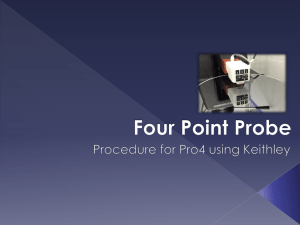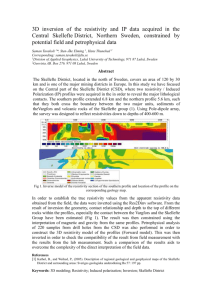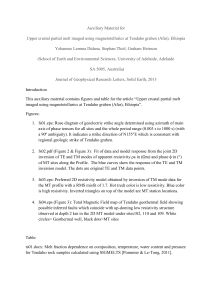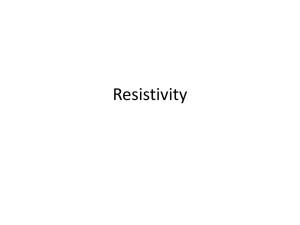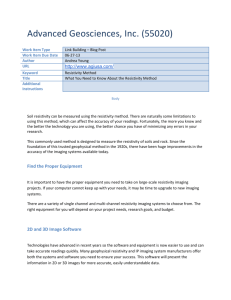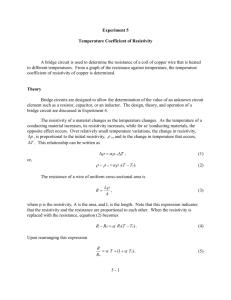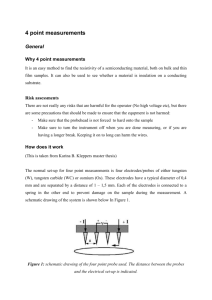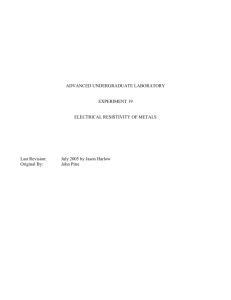Four Point Probe
advertisement
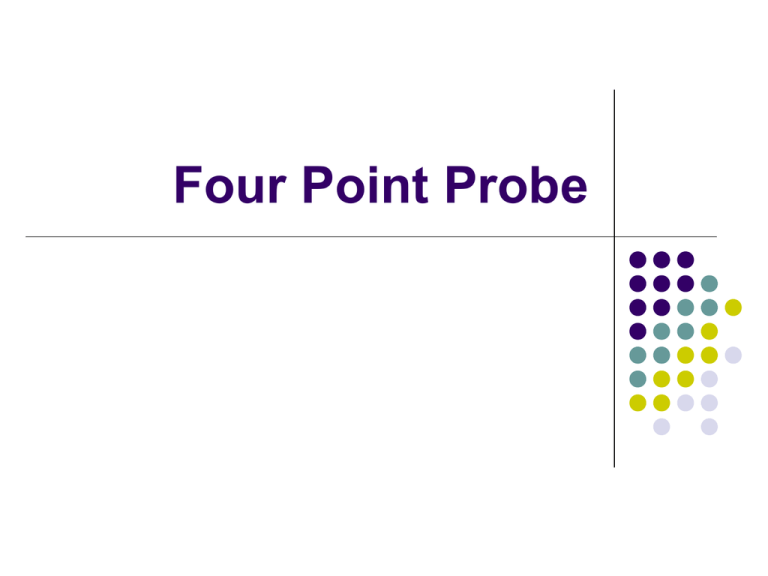
Four Point Probe Overview What is Four Point Probing How the system works Simple Calculations behind Four Point Probing Methods and Procedures for using Four Point Probing Why is it important Conclusion What is Four Point Probing Four Point Probing is a method for measuring the resistivity of a substance. How the system works In order to measure the resistivity of a substance, four points of contact must be made with the probe and the substance. Current goes through the two outer probes, and the difference in voltage is measured between the two inner probes. Through this process the resistance can be calculated. Simple Calculations If the spacing between the probe points is constant, and the conducting film thickness is less than 40%, and the edges of the film are more than 4 times the spacing distance from the measurement point, the avg resistance of the substance is given by… Rs= k x V/I For bulk resistivity, the sample is much larger than the spacing of the probes, the sheet resistance is defined as the resistance equal to the bulk resistivity divided by the sample thickness. The equation is given by… Rs= P/t Terms Rs = Resistivity of the substance K = constant for the average resistivity that is equal to 4.53 P = Resistance t = thickness of the substance Procedures and Methods for determining the resisitivity of a sample One way to determine the resistivity of a sample is to use a machine. There are may machines that can do that and they range in the thousands of dollars. One of those machines is the Pro-4. The Pro-4 The Pro-4 is one of the methods used to measure the resistivity of a sample no matter what the thickness of the sample is. The Pro-4 uses and is connected to a computer and power source/ voltmeter. The Pro-4 is controlled by a computer for easy use.The computer automatically controls the Keithley 2400 (current/voltage source) series and steps through a number of current settings to find the ideal current for accurate readings. A V/I measurement is taken and recorded. The system uses the Dual Configuration test method of ASTM Standard F84-99 to compensate for errors in probe spacing and errors caused by proximity to the edge of the conducting layer. Proper use of the standards and the calibration procedure insures the specified system accuracy of better than 1% Procedures for using the Pro-4 1. Click on the tab that says auto test 2. Then insert the required information 3. Position the sample dead center on the mounting table. 4. Then move the sample to the required location All of this information can be found out the samples packaging label. Usually you start in the middle, then move it to the left, then top, then the right, and finish up with the bottom. After it is finish, values of currents, resistivity, difference in voltage, and other values will be given. The program will also calculate if the given substance pass or failed the test of resistivity. In order to pass, the substance must resistivity must be uniform throughout the entire substance. The resistivity can be off only in the range specified by the user. Usually is 3% to 10% range. Why is it important? Resistivity is a particularly important semiconductor parameter because it can be related directly to the impurity content of a sample. The purity of a substance is an important factor when it comes manufacturing or engineering certain projects. Conclusion Four Point Probing is an important method of calculating the resistivity of a substance. Four Point Probing is very useful and needed in the micro electronics world.
